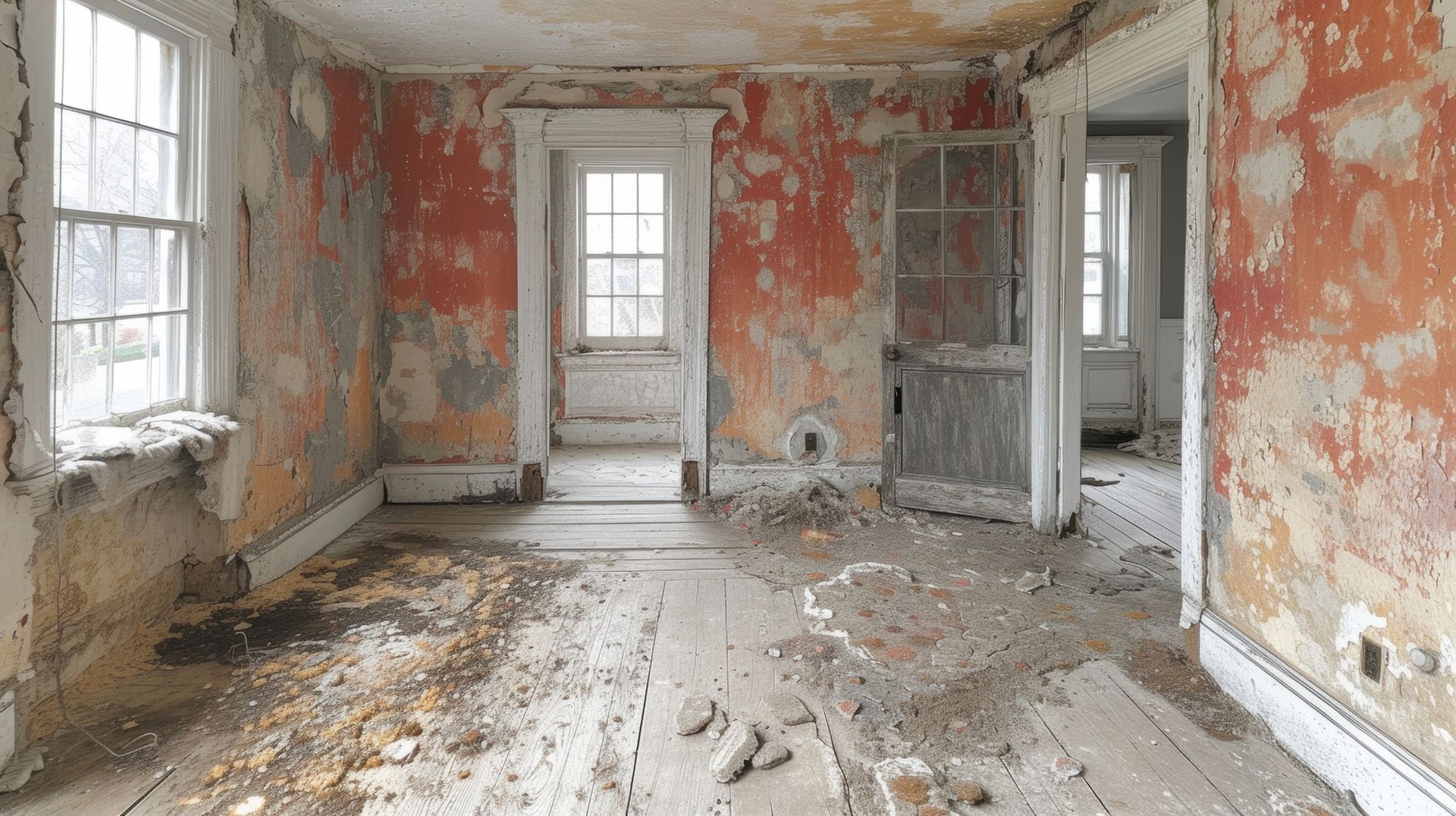Evaluating the Condition of Your Home: DIY Guide and Resources
March 18, 2025
Selling a home—especially in a hurry—can feel a bit overwhelming if you’re unsure about its condition. While you don’t need a perfect property to sell (at 360 Home Offers, we buy homes as-is), it’s still wise to have a handle on any potential issues. This blog will guide you through a basic do-it-yourself (DIY) evaluation, share useful checklists, and help you decide if it’s time to bring in a professional. By the end, you’ll be better prepared to move forward confidently.
Why Evaluating Your Home Matters
Assessing the current condition of your property offers several benefits, even if you plan to sell quickly:
- Prevent Surprises: Uncovering problems early can spare you last-minute scramble.
- Highlight Strengths: Spot the best features of your home that you can emphasize when marketing.
- Set Realistic Expectations: Know if minor repairs might boost your home’s appeal before you list or request an offer.
A proactive evaluation doesn’t mean you have to undertake major renovations—especially if you plan on selling to a company that welcomes homes in any condition, such as 360 Home Offers. You’ll simply be better informed about your property’s state, should any buyer questions arise.
Start with a Basic DIY Checklist
Getting a sense of your home’s condition doesn’t always require professional expertise—though pros can help when issues get complex. Below is a simple checklist to guide your initial walk-through:
1. Exterior Inspection
- Look for cracks in the foundation and uneven concrete.
- Check the roof for missing shingles or signs of discoloration.
- Inspect gutters for clogs or loose attachments.
- Examine windows and doors for damaged caulking or weatherstripping.
2. Interior Floors and Walls
- Scan flooring for squeaks, water damage, or noticeable wear.
- Check walls for cosmetic cracks or peeling paint.
- Pay attention to any musty smells, which may indicate hidden moisture issues.
3. Plumbing and Electrical Basics
- Flush toilets and run sinks to detect leaks or slow drainage.
- Test light switches and outlets to ensure they work.
- Note any flickering lights or frequently tripped circuit breakers.
4. Appliances and HVAC
- Verify that your stove, dishwasher, and other appliances start up with ease.
- Listen for strange sounds from your furnace or air conditioning unit.
- Replace HVAC filters if they look dirty.
For a downloadable, more detailed DIY checklist, consider exploring resources like The Family Handyman’s Home Maintenance Checklist. It breaks down tasks by season to help you stay organized throughout the year.
Look for Common Red Flags
While you want to keep your evaluation positive, it’s still essential to watch for certain issues that might affect the comfort of future homeowners:
- Visible Water Stains: Look around sinks, showers, and the ceiling for brownish stains that could signal leaks.
- Unusual Smells: Persistent odors could indicate mildew, mold, or even outdated carpeting that might need refreshing.
- Inconsistent Temperatures: If one room is noticeably colder or warmer than the rest, you might have insulation or ductwork issues.
Discovering these conditions doesn’t mean your home isn’t sale-worthy; it simply means you’ll have clearer insight into what buyers may consider before making an offer. Many quick-sale buyers, including 360 Home Offers, are used to dealing with all sorts of property conditions—and that includes properties with minor or even more significant red flags.
When to Call in the Professionals
A DIY evaluation offers a broad overview, but there are times when a professional opinion can be invaluable:
- Roof Concerns: If you find missing shingles, sagging areas, or repeated leaks, a roofer can assess the state of your roof accurately.
- Foundation or Structural Issues: Cracks larger than a quarter-inch may point to deeper structural problems. In that case, hiring a qualified structural engineer for an inspection can provide clarity.
- Major Electrical or Plumbing Problems: Frequent breaker trips or unexplained pipe noises may require professional troubleshooting.
Requesting an expert inspection—a service often provided by certified professionals from associations like the American Society of Home Inspectors (ASHI)—can save you from costly surprises later. If a major fix is on the table, you may also learn whether a short-term patch or a longer-term solution is more appropriate.
Recommended Tools and Resources
Below are some tools and resources that can streamline your DIY evaluation and help you decide if you need professional support:
- Moisture Meter: A simple device to gauge moisture levels in walls, floors, or ceilings.
- Thermal Imaging Camera: Can help detect hot or cold spots that might indicate insulation gaps or water leaks.
- Online Maintenance Schedules: For instance, HUD.gov’s Home Maintenance Checklist can keep you on track throughout the year.
According to the 2019 American Housing Survey from the U.S. Census Bureau, homeowners across the country are continually investing in small and large-scale house projects. Having the right tools can help you manage any priority tasks that crop up before you decide to list or sell.
Setting Yourself Up for a Stress-Free Home Sale
Even after you gather all this information, remember that making large-scale fixes or cosmetic upgrades isn’t always necessary—particularly if you’re thinking about a direct sale to 360 Home Offers. We specialize in providing straightforward, fair offers that let you bypass the need for expensive or time-consuming home improvements. The goal is to make the selling journey simpler:
- No Costly Upgrades Required: If you notice a few areas that need improvement but lack the budget or desire for renovations, that’s our specialty.
- No Pressure: We understand that taking on big projects might not be feasible, and we respect your timeline.
- Sell As-Is: We buy properties as-is, no matter the condition—meaning you don’t have to stress over every tiny detail uncovered during your DIY evaluation.
Moving Forward with Confidence
By learning the basics of home condition evaluation—from straightforward DIY checklists to knowing when to consult an expert—you’ll position yourself for a smooth, informed selling experience. Whether your home is practically move-in ready or needs a little TLC, understanding its condition helps you decide the next steps that align best with your goals.
If you prefer a quick sale without the hassle of repairs, or simply want a friendly conversation about your options, contact 360 Home Offers. We’re here to make the home-selling process transparent, convenient, and above all, supportive. With the right knowledge and resources at your fingertips, you’ll be well on your way to moving forward—no matter what condition your home is in.

Understanding the complexities of property ownership is crucial for anyone involved in real estate transactions. Complicated ownership situations can arise from unclear titles, liens, and joint ownerships, all of which can significantly impact the selling process. These issues are not uncommon and can derail a property sale if not addressed early. Before listing a property for sale, it's important to resolve these matters to prevent delays and ensure a smooth transaction. For an in-depth explanation of property titles and liens, you can refer to Investopedia.










